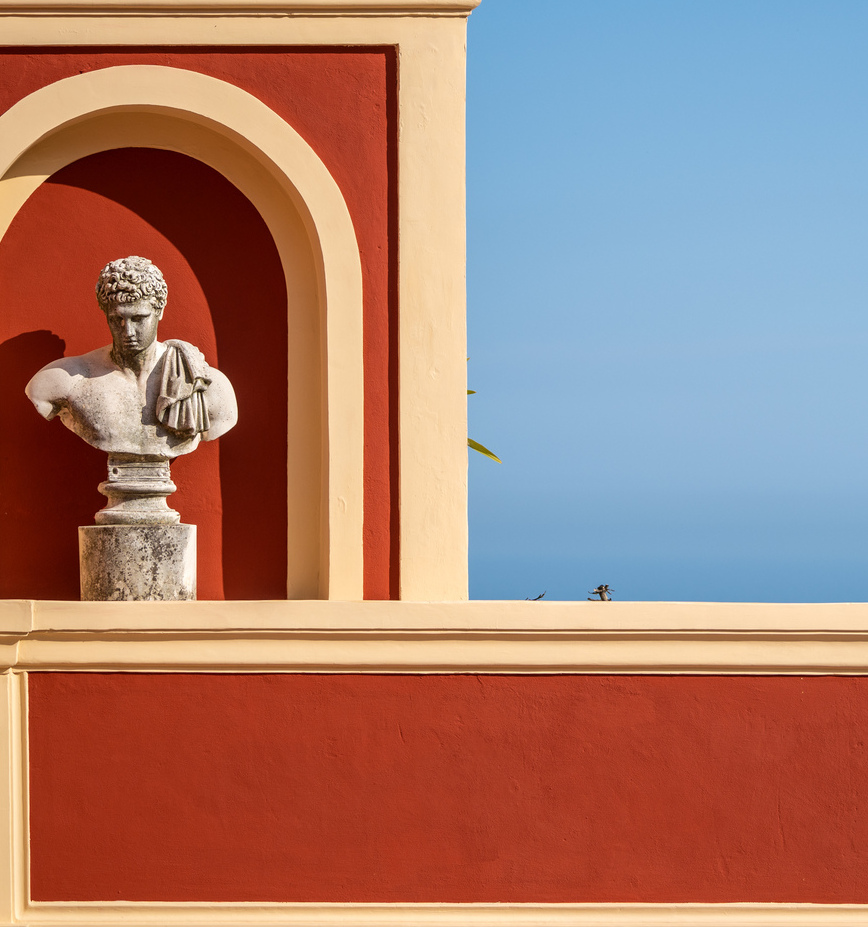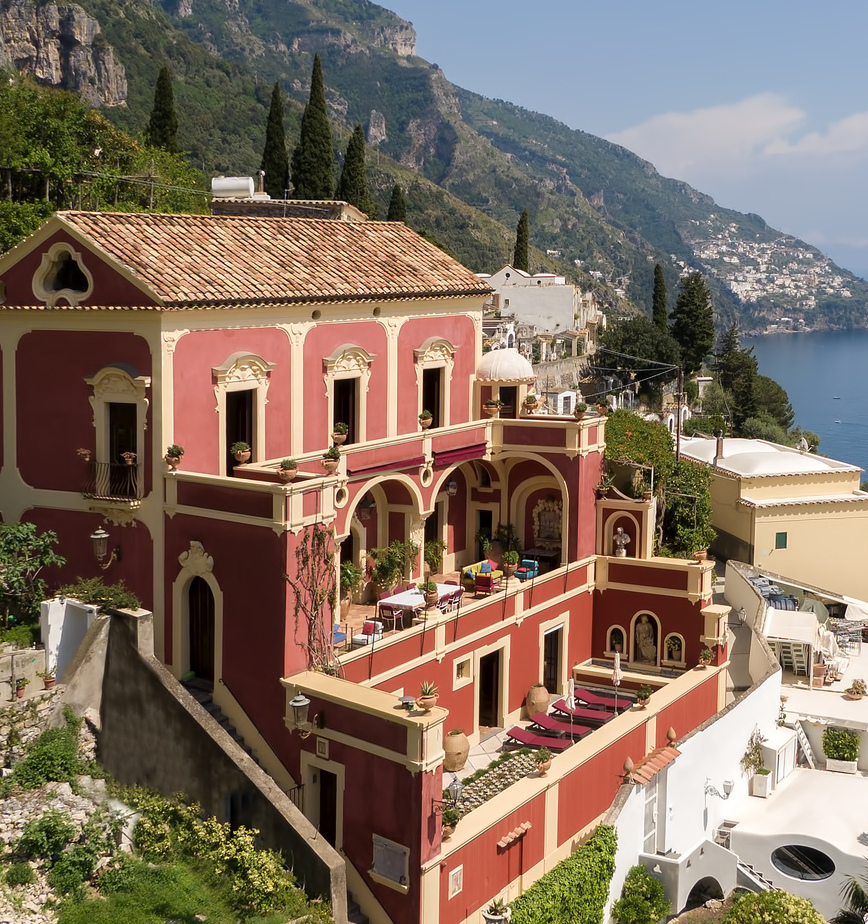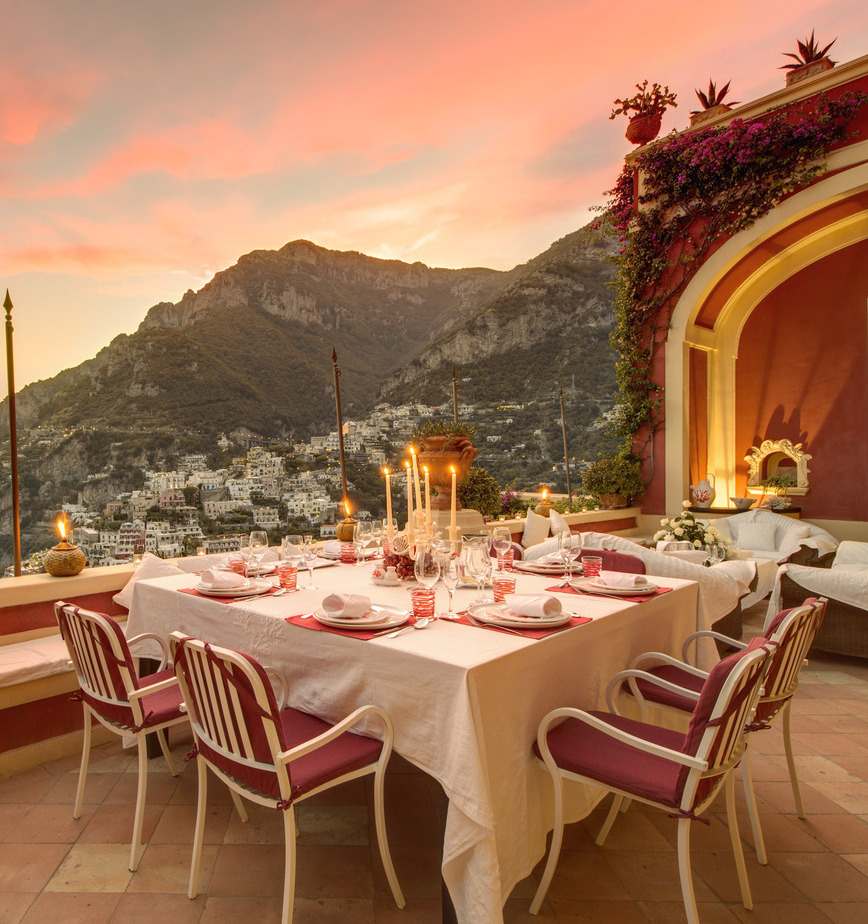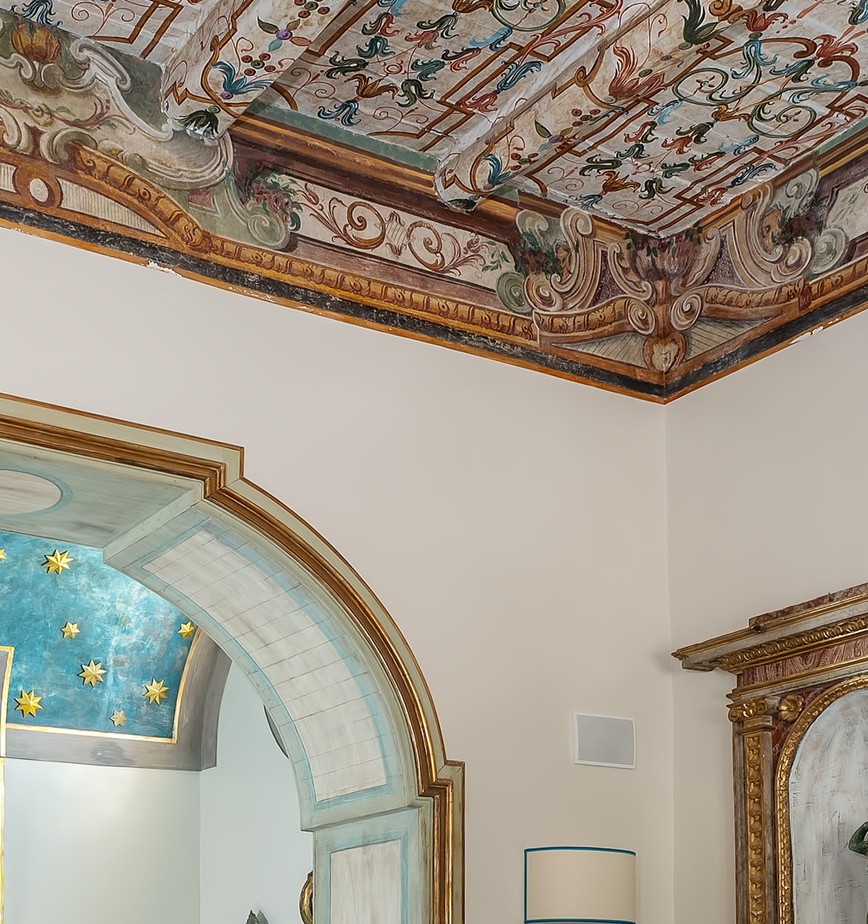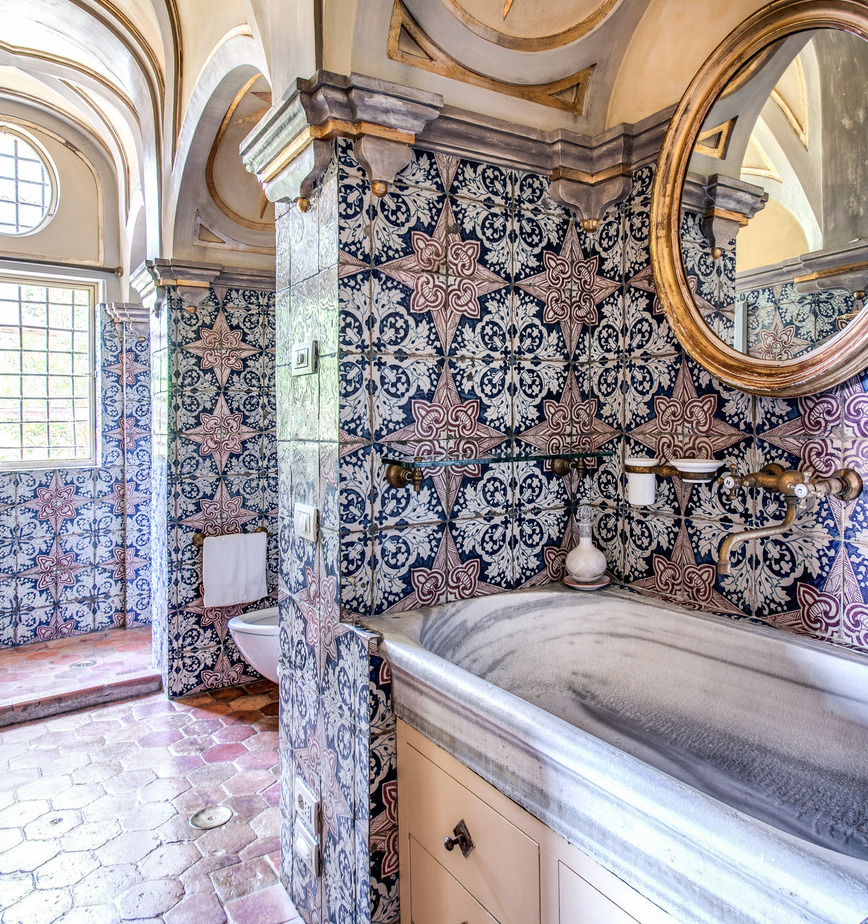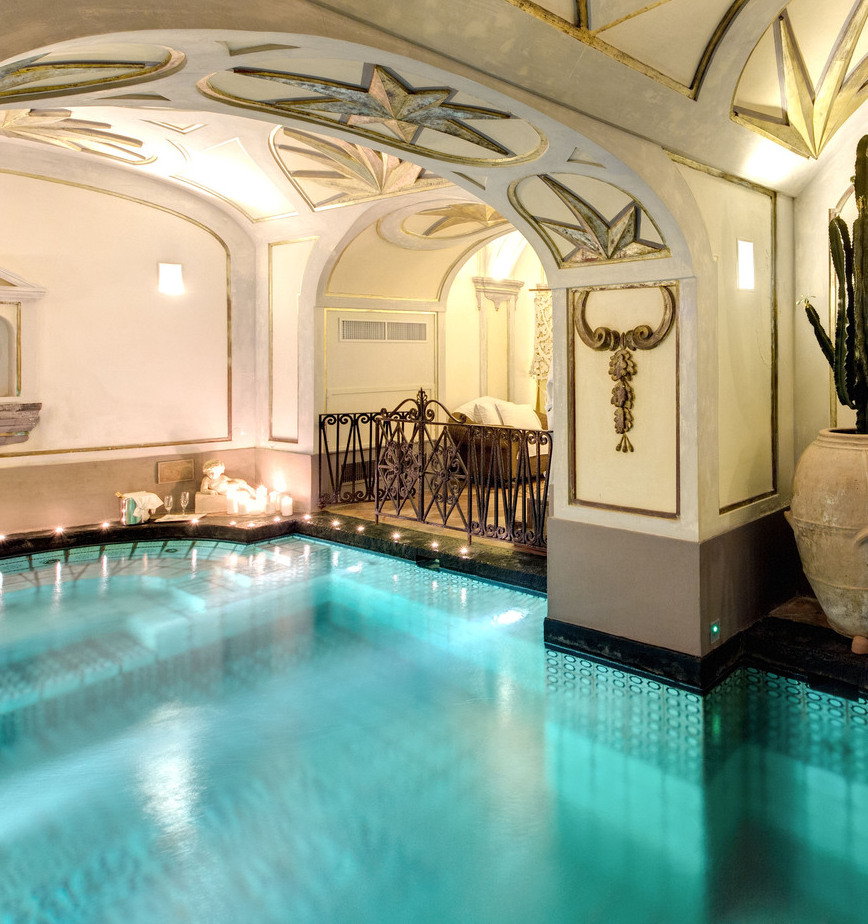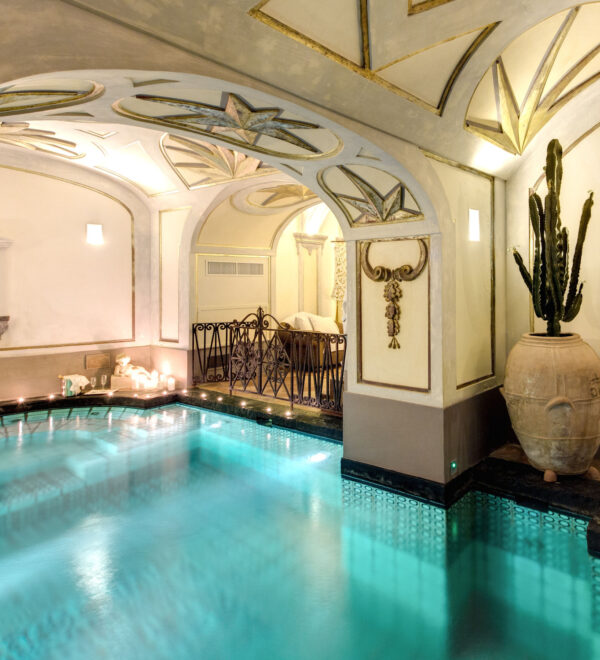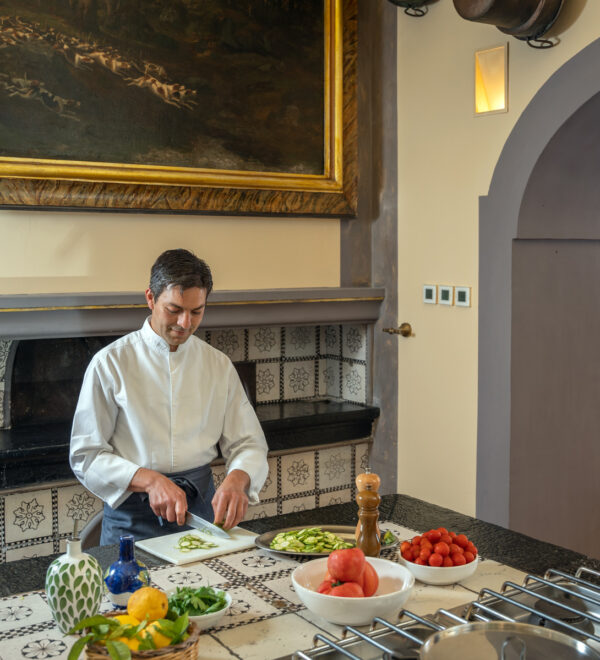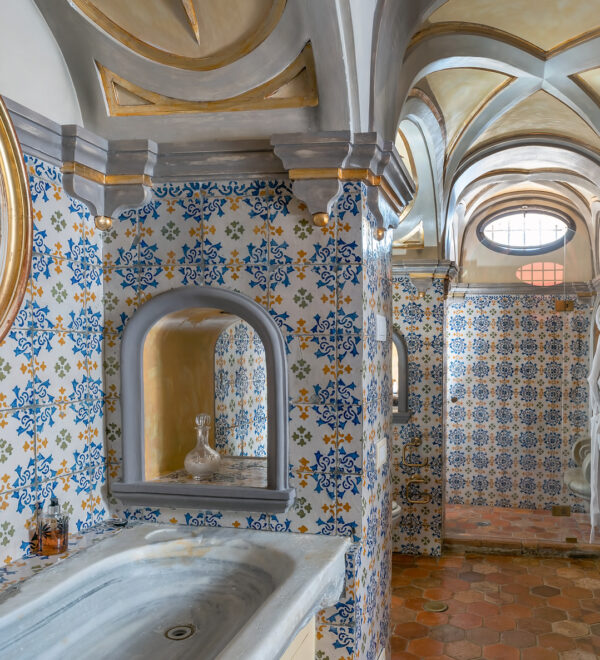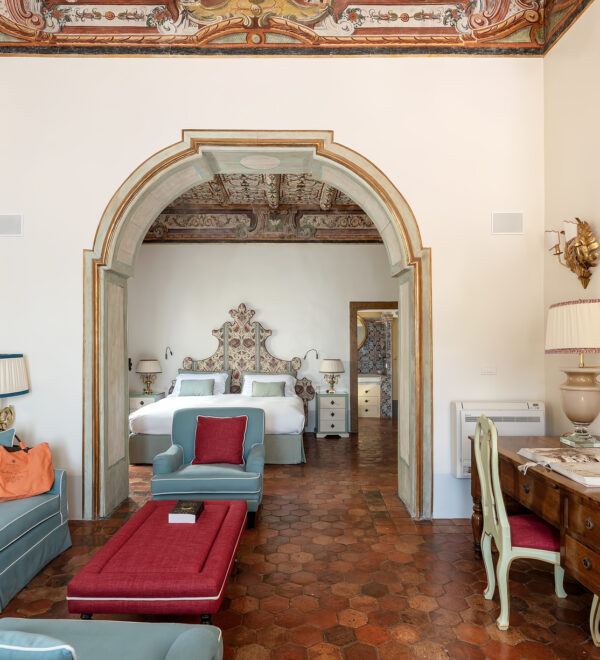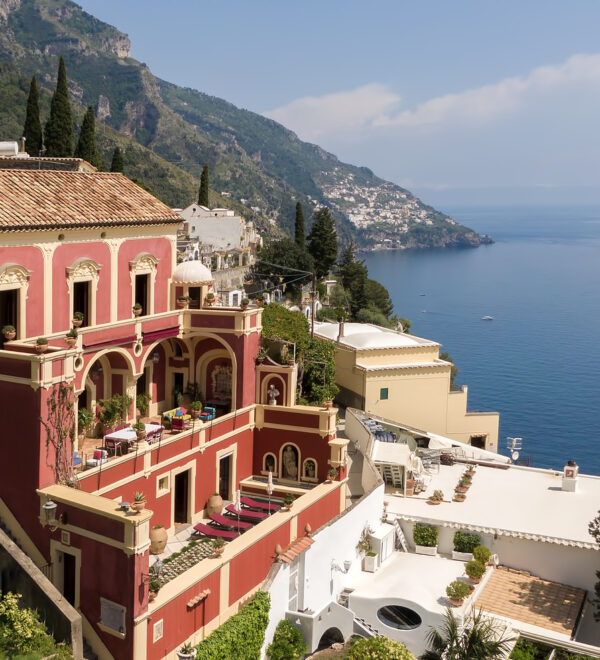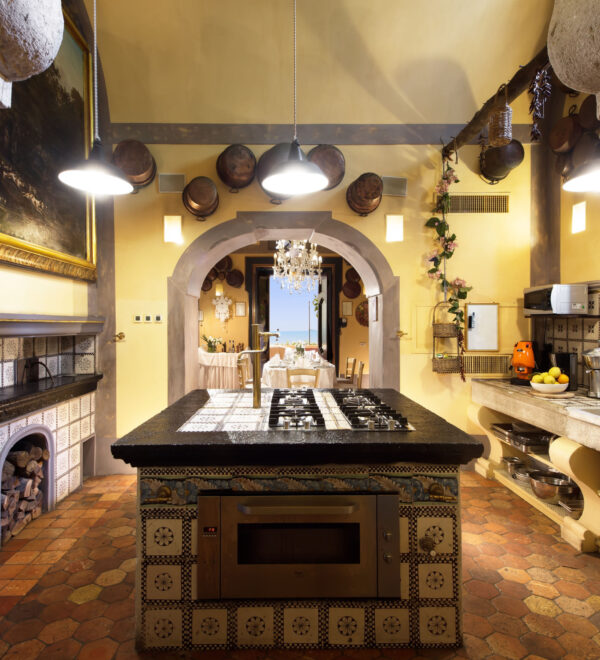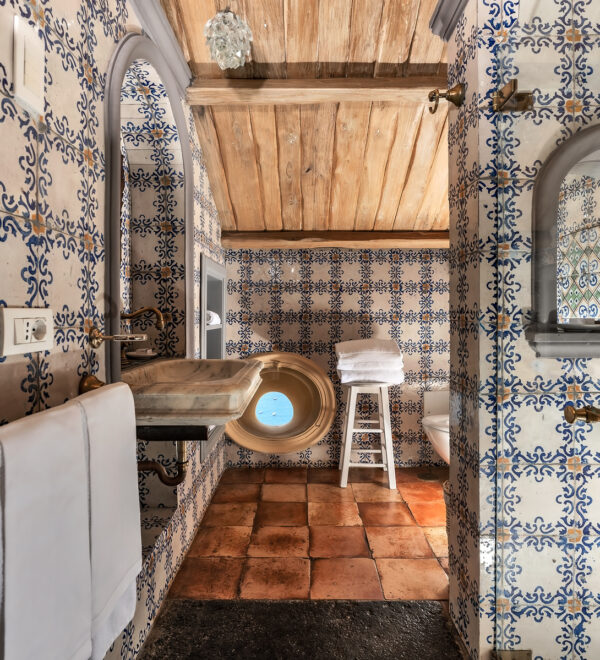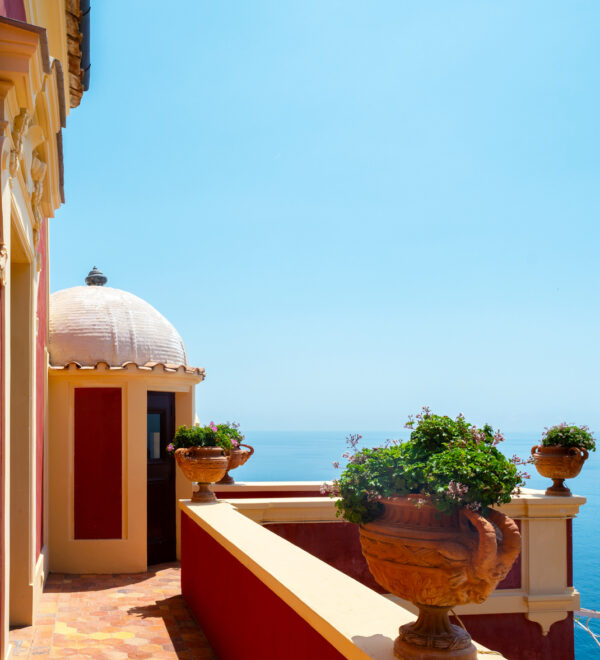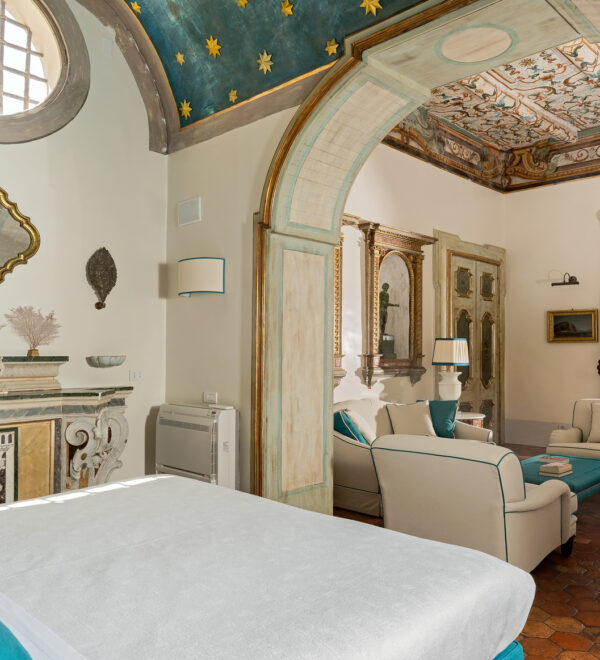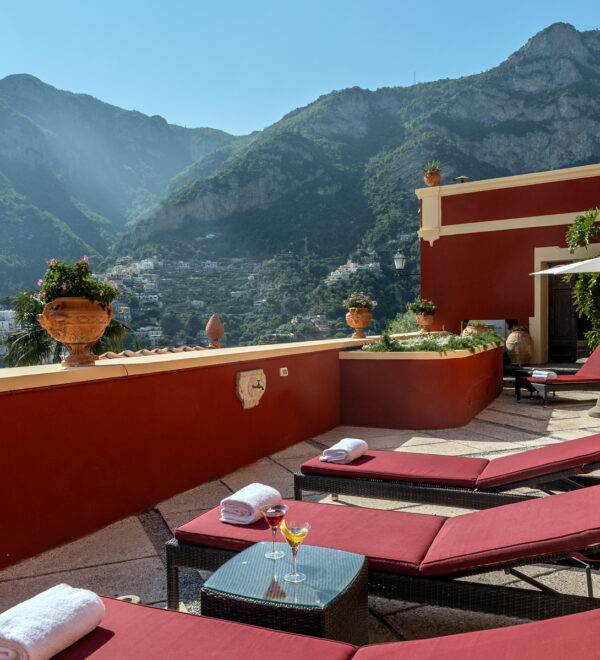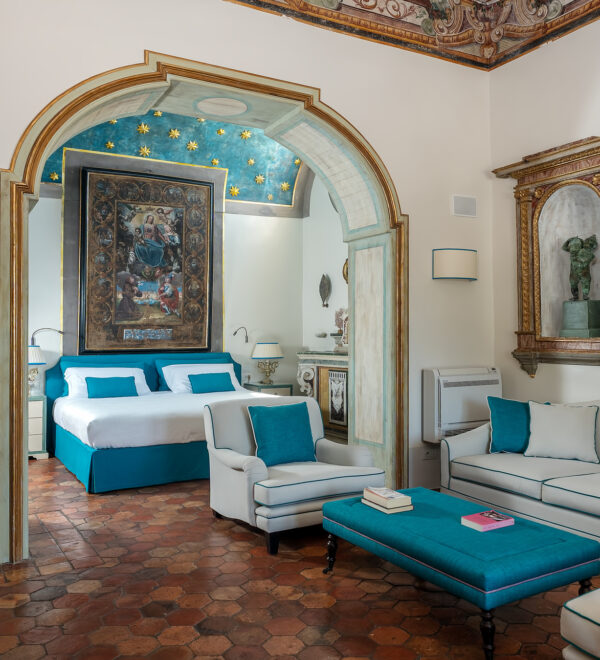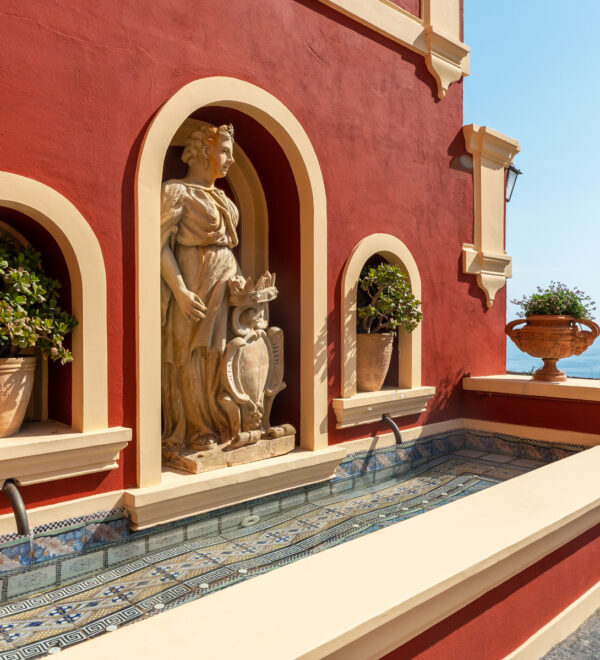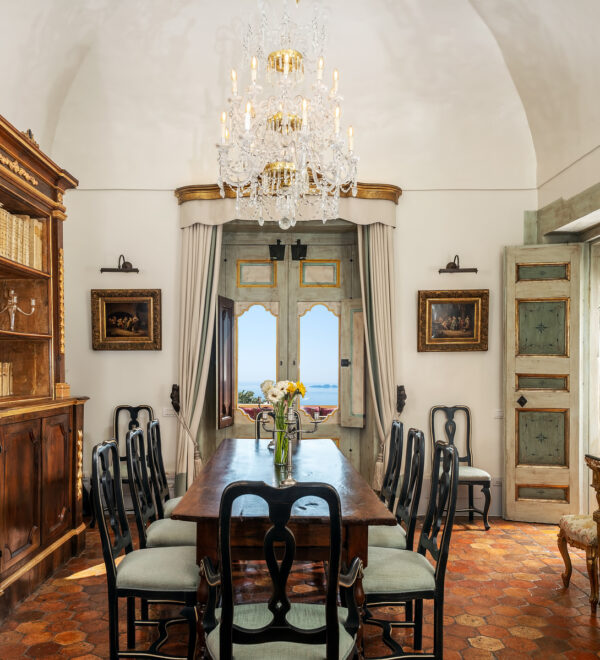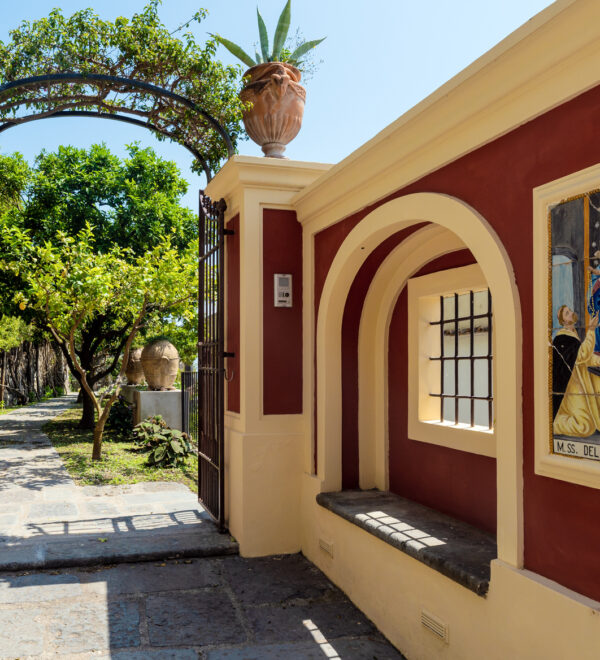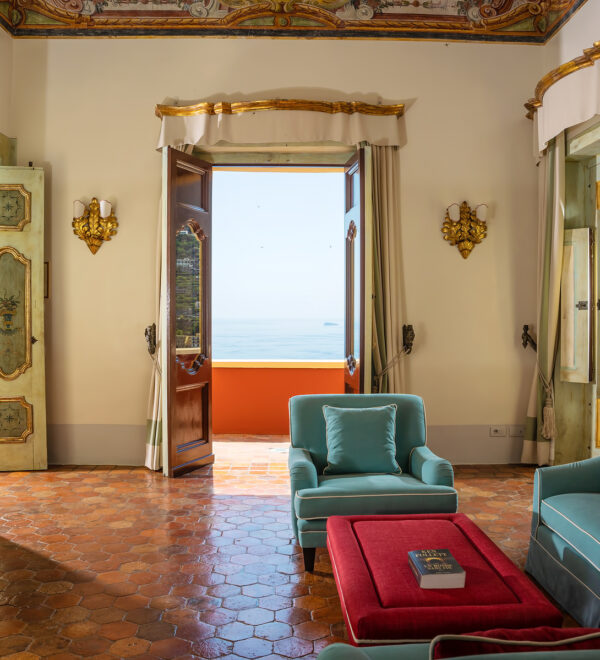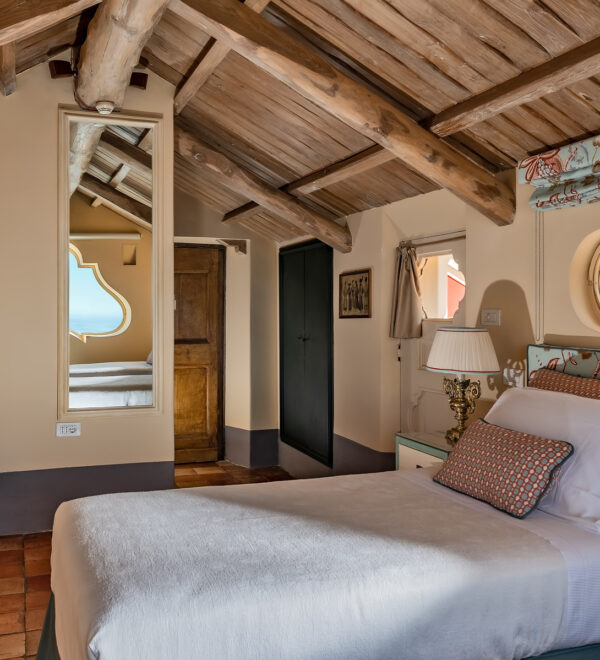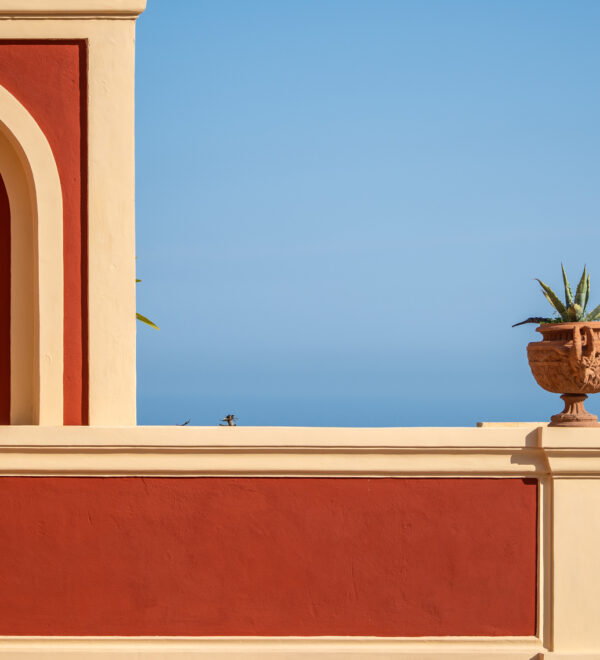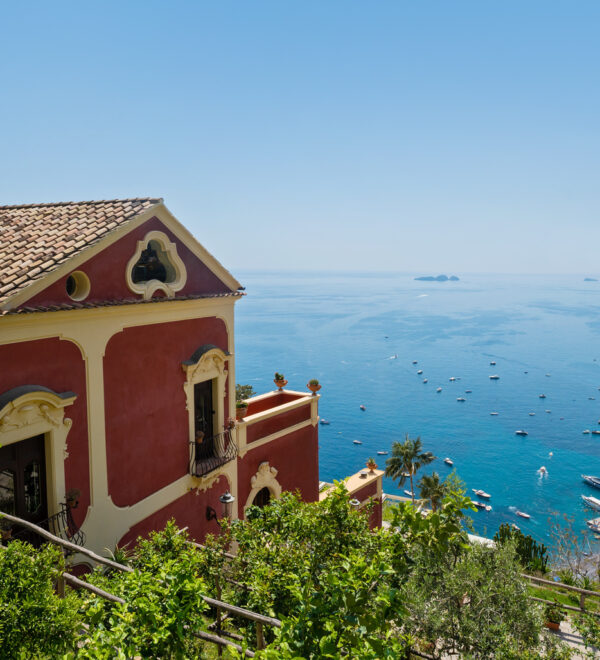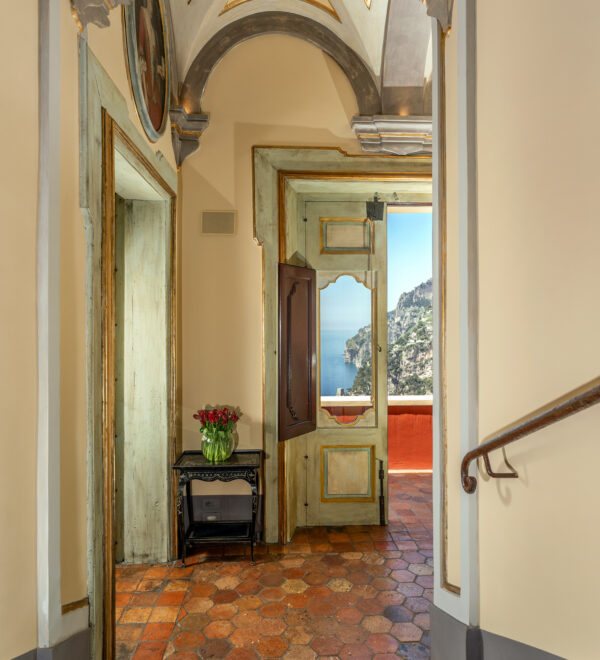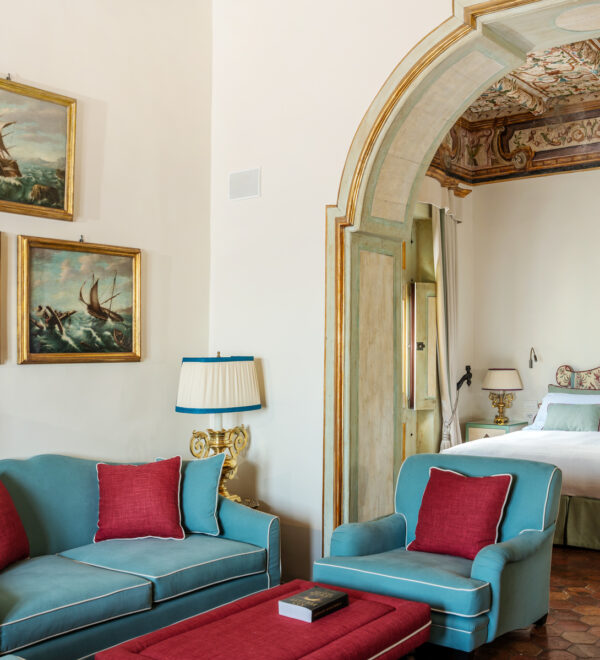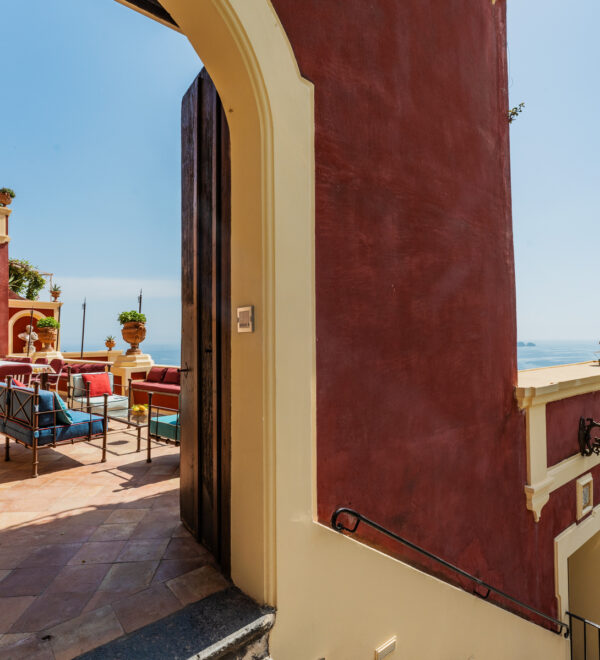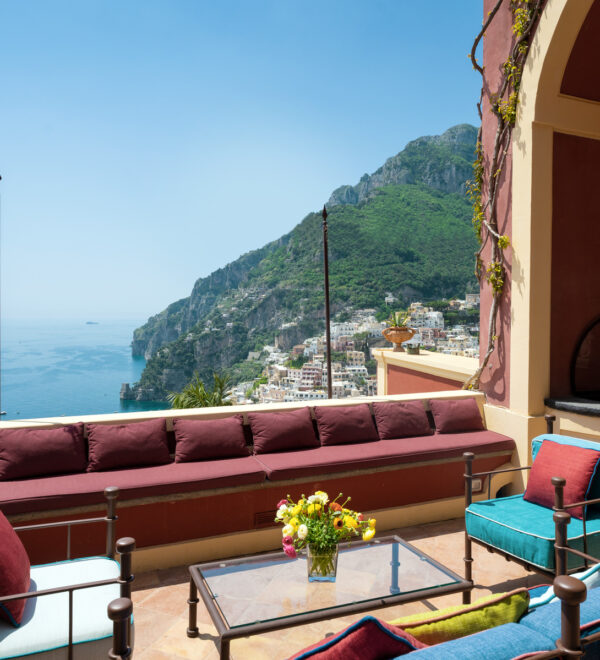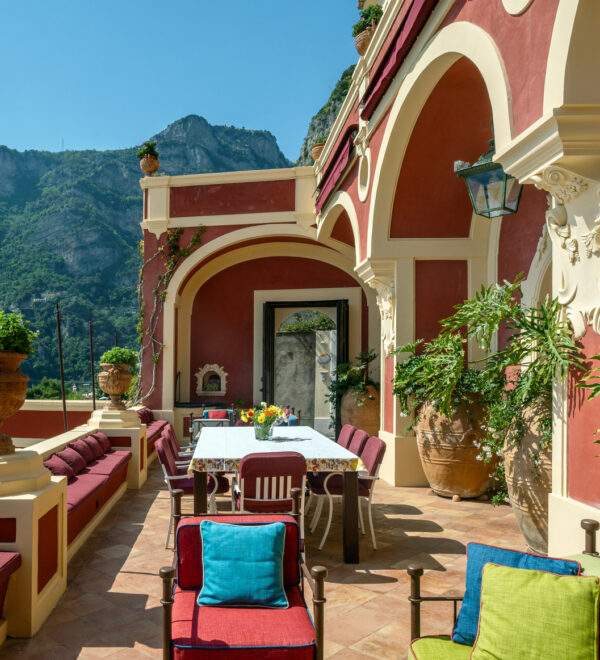Palazzo a Positano
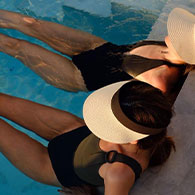
9 GUESTS
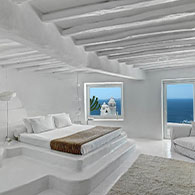
5 ROOMS
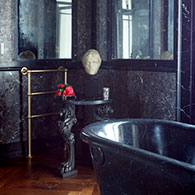
7 BATHROOMS
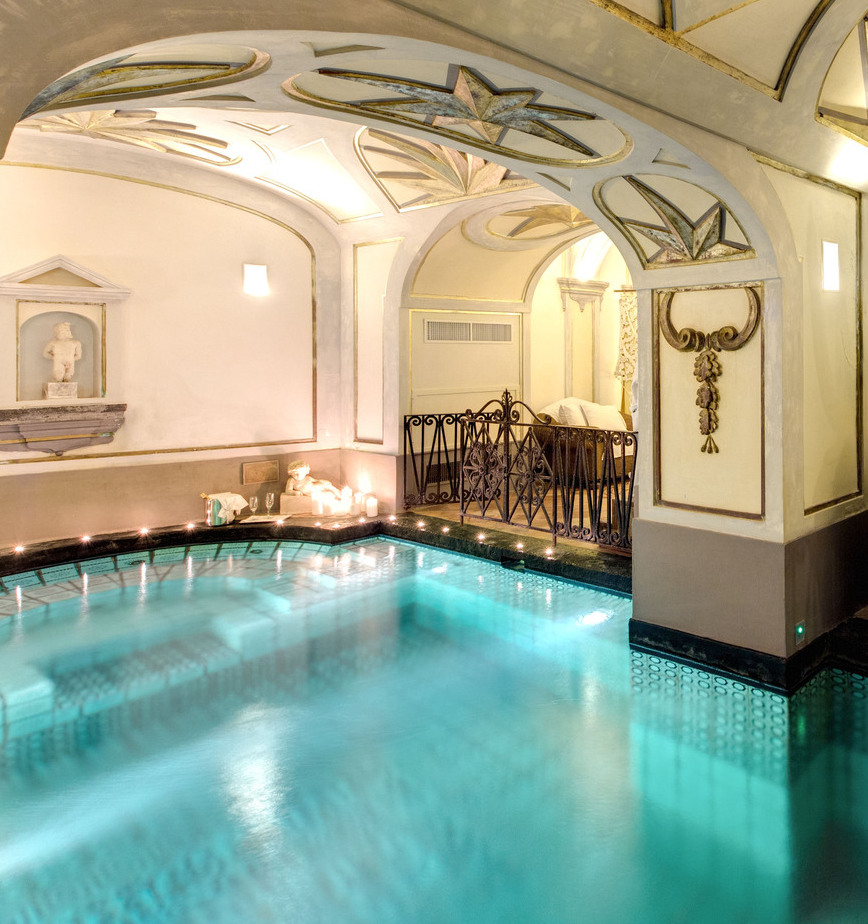
interior Pool
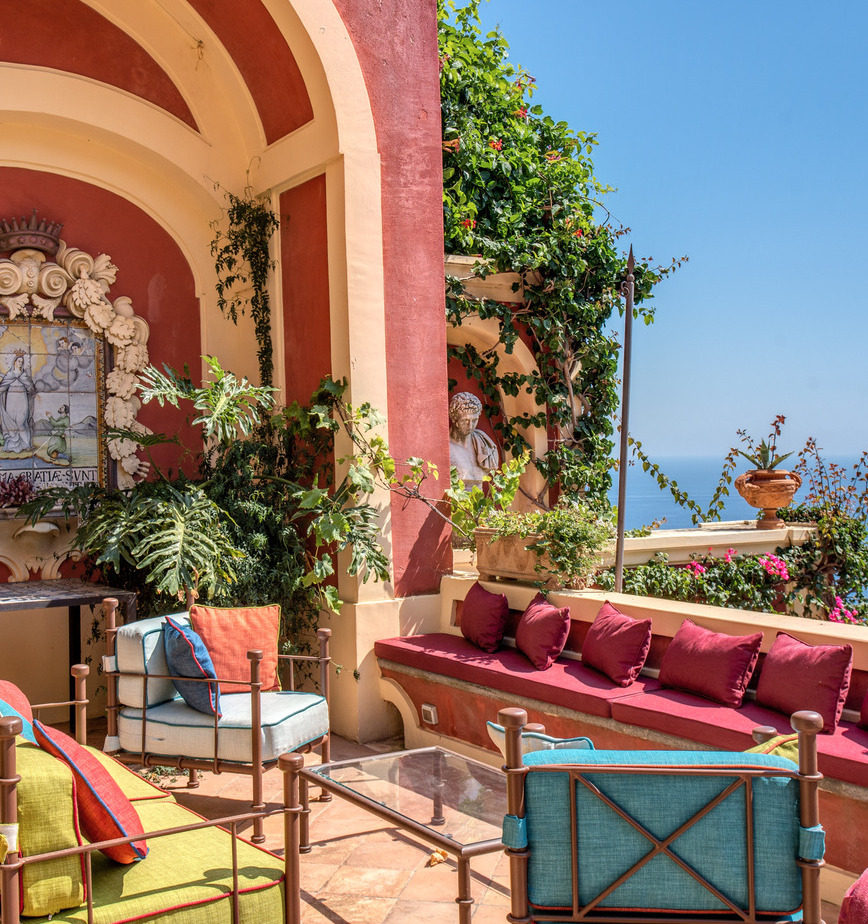
Historical House
Price
Price starts from
INTERIOR mq : 497
EXTERIOR mq: 400
TERRACES mq: 142
Conditions:
minimum stay of 3 nights. HIGH SEASON minimum stay 7 nights
Services included:
– chef, butler and housekeeper (8 hours/day)*
– continental breakfast
– heating, gas, air conditioning and electricity
– daily change of bed linen and bath towels
– pool cleaning
– final cleaning
– Wi-Fi
Services NOT included
– telephone/fax
– food and drinks
– additional staff time: € 35/hour/person – laundry service, € 25/hour/load
– baby-sitter
Get a personalized quote
You need to add some cool extra features like more Guests, Boat Tours or other?
Describe us all your requests and we’ll make a customized offer for you.
Features
Bedrooms
Suite Alfonso
Letto Matrimoniale Grande [1], Divano letto/futon [1]
The Alfonso suite has beautiful frescoed ceilings dating from the 1700’s, a private bathroom decorated with antique tiles and stone sink, two balconies, and a magnificent terrace with a view over Positano’s beach. Services & Amenities Air conditioning Heating Wifi Private bathroom Bathroom courtesy range Sofa Hairdryer Safety deposit box Minibar TV Sea view Concierge
Suite Isabella
Letto Matrimoniale Grande [1]
The Isabella suite is decorated in keeping with the villa’s overall Baroque style, with frescoed ceilings and a private bathroom decorated with antique majolica tiles. The terrace overlooks the sea and the Chiesa Madre.. Services & Amenities Daily cleaning Daily change of bed and bath linen Breakfast served in the living room or on the terrace Air conditioning Concierge Sofa Heating Sea view Hairdryer Safety deposit box TV Minibar Wifi
Praiano Attic Suite
The view will take your breath away. From the picturesque window, you can see as far as Praiano and across the Mediterranean horizon. The bathroom is decorated in antique majolica tiles and an intimate terrace looks out on the sea and gardens. Services & Amenities Daily cleaning Daily change of bed and bath linen Breakfast served in the living room or on the terrace Air conditioning Concierge Terrace Sea view Hairdryer Safety deposit box TV Minibar Wifi
Positano Attic Suite
Letto Matrimoniale Grande [1]
A romantic ensuite room tucked under wooden eaves and decorated in a welcoming Mediterranean style, with a large window overlooking Positano and lush villa garden, with orange and lemon trees and flowering bougainvillea.
Single Room
Letto Singolo [1]
This cozy room decorated in antique majolica tiles is perfect for young guests, personal staff or child minders. The room has its own private bathroom on the landing.
Bathrooms
Alfonso’s Bathroom
Caratteristiche: Toilette, Box doccia, Bidet
a private bathroom decorated with antique tiles and stone sink
Isabella’s bathroom
Caratteristiche: Toilette, Box doccia, Bidetprivate bathroom decorated with antique majolica tiles.
Bathroom’s Praiano Attic Suite
Caratteristiche: Toilette, Box doccia, BidetThe bathroom is decorated in antique majolica tiles and an intimate terrace looks out on the sea and gardens.
Bathroom’s Positano Attic Suite
Caratteristiche: Toilette, Box doccia, BidetBathroom’s single bedroom
Caratteristiche: Toilette, Box doccia, BidetServices
KITCHEN AND DINING ROOM
- Kitchen
- Fridge
- Stove top
- Oven
- Microwave
- Dishwasher
- Food-and-cutlery
- Spices
- Coffee machine
- Toaster
- Lunchroom
- Kettle
ENTERTAINMENT
- Spa
- sauna
- steam bath
INDOOR SERVICES
- Conditioned air
- Internet
- Heating
- Washing machine
- Salon
- Hairdryer
- Pool-indoor-air-private
- Turkish bath
- Hydromassage
- Safe-deposit box
- Safe-box
OUTDOOR SERVICES
- Hydromassage
OTHER SERVICES INCLUDED
- Linen-supplied
- Towels-supplied
- Continental Breakfast
- Line-courtesy
- daily-clean-change-of-linen-towels
- Utility-bills-excluding-telephone-
- Wifi
- Concierge-service 8 h per day
- chef service 8 h per day
- Every-day-cleaningPorter service from Monday to Saturday, from 8am to 6pm
- Welcome dinner
SERVICES ON REQUEST NOT INCLUDED
- Car
- Massage
- Service-extra-linen
- Laundry-and-Ironing
- Service-shopping-on-request
- Line-courtesy
- Luxury-car-rental
- Helicopter-transfer
- 24-7-security-guards
- Massage-beauty-treatments-hairdresser
- Chef-extra-hours
- Cooking-lessons-or-cooking-gastronomy
- Private-guide
POSITION
- Near the sea
- Sea-view
STAFF INCLUDED
- Chef
- Concierge
- porter
STAFF NOT INCLUDED
EQUIPMENT
- Library
- safe
The date 1716 is carved in stone at the entrance to the Palazzo in Positano, the year in which the palace became a bishop’s residence. Its foundation dates further back to the second half of the 17th century and the original project perfectly took into account the aesthetic canons of the time, inside as well as outside.
Its history as a religious residence is evoked in the spiritualized style of the structure and furnishings, as well as numerous detailed paintings of the battle of Lepanto, pride of the Holy League).
The precious interiors (rich in stuccos, vaults, marble, lacquered doors and other ornaments) and above all the elegant façade overlooking Positano with statues, loggia and
panoramic terraces and balconies are reminiscent of the Baroque style of that era.
Today, these characteristics give it a strong and distinguishing character in the town, as does its striking Pompeii red colour, greatly in vogue in the 18th century.
The Palace is located in the Li Parlati district of Positano where numerous other sumptuous villas were built, causing locals to call this zone “‘a via re case longhe”, or “the road of long houses” because of the large palaces that stood out in contrast
to the more common houses of the time.
In 1926, Eduard Gillhausen came to Positano to cure himself of a post-WW1 nervous breakdown he had suffered. A German from Hattingen and exponent of the art and design school called Bauhaus, he arrived with his lover Hedwig to start a new life.
They seemed to come out most especially at night; it is said that he could only be met
from sunset onwards, likely linked to his studies in astronomy and a passion for stargazing).
Don Eduardo, as the locals called him, settled in the Palazzo,
in love with the wonderful view, the peace of the place and with Eva Maria (in the meantime, she too had changed names).
Together they would host great icons of twentieth-century culture like
Pablo Picasso, John Steinbeck, Alberto Moravia and many others.
In 2003, the Palazzo passed to new owners who, over the course of four years, subjected the structure to a skillful restoration returning the villa to its original splendor.


